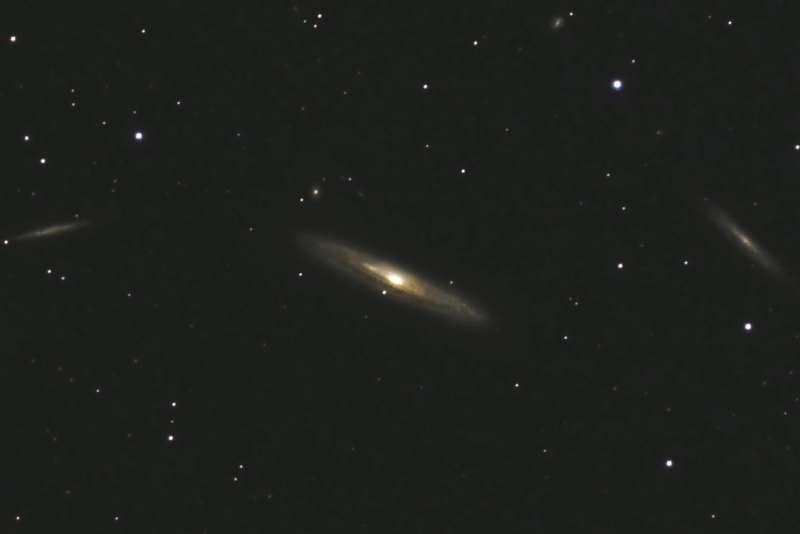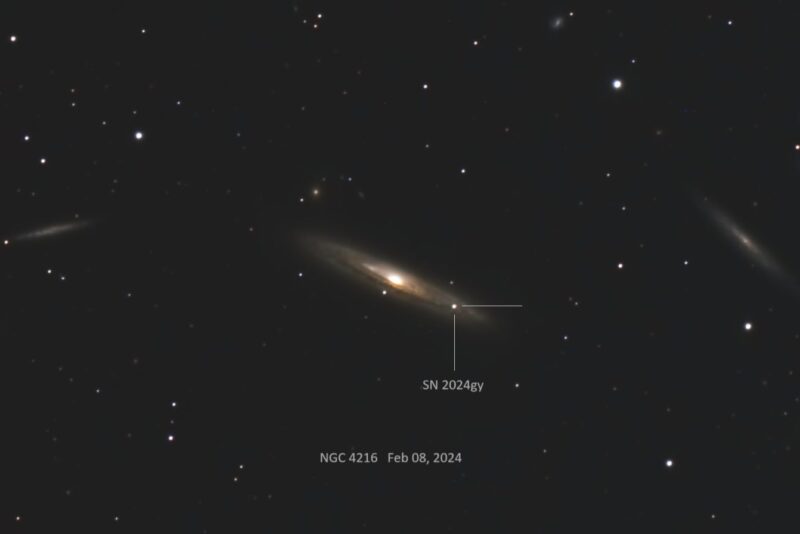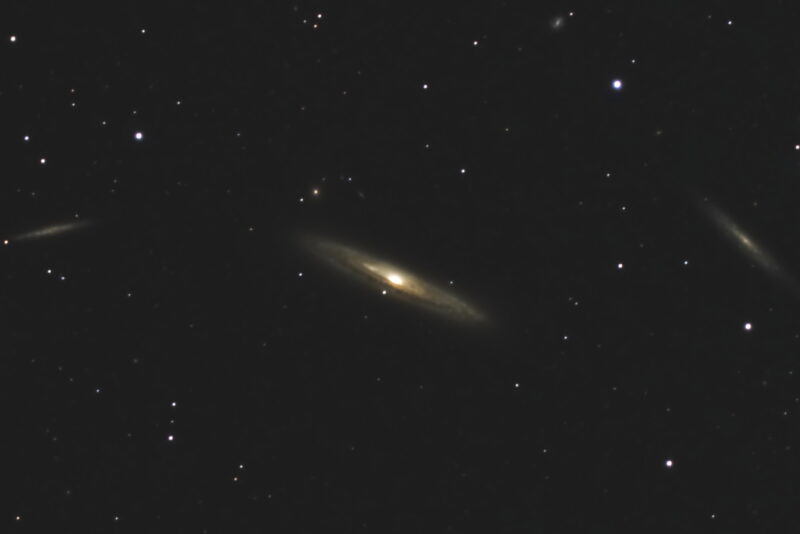
A new supernova in Virgo
Steven Bellavia e-mailed EarthSky on Thursday, February 8, 2024, to alert us about a new supernova explosion in a galaxy some 55 million light-years away. From across vast space and time, the supernova shows up remarkably easily in his image.
Amateur astronomer Koichi Itagaki of Japan discovered the supernova on January 4, 2024. Itagaki has discovered more than 170 supernovas. When Itagaki discovered it, the supernova was still a remarkably dim magnitude 16.3. The supernova, now named SN 2024gy, has brightened a bit since then. When Steven took his image of the supernova on February 8, it was approximately magnitude 13. But that’s still far below what most casual amateur astronomers can spy with a backyard telescope.
In the image above, the “before” of galaxy NGC 4216 is from May 31, 2022. And Steven took the “after” image on February 8, 2024.
How’d he do it?
Steven shared all the technical details with us. Here’s how he got both the before and after shots:
Telescope: TSO-115mm Triplet f/7 refractor with TSO 3-inch, 0.79X reducer-flattener, 645mm focal length
Camera: ZWO ASI 533MC Pro, cooled to -5CIntegration, May 31, 2022, Cherry Springs State Park, PA (before SN visible):
– Astronomik L2 UV-IR cut, 21 x 300 seconds, Gain 100 (1.75 hours)
– 30 Flat Frames, 30 Dark-Flat Frames and 30 Dark FramesIntegration, Feb 08, 2024, Mattituck, NY (after SN visible):
– Astronomik L2 UV-IR cut, 20 x 240 seconds, Gain 100 (1.33hours)
– 30 Flat Frames, 30 Dark-Flat Frames and 30 Dark FramesMount: Sky-Watcher EQ6-R Pro using EQMOD software
Guide Scope: The Bellavia Basic 50mm, 370mm FL
Guide Camera: ZWO ASI 290MC
Still images
Here are the still images of the galaxy, in case you want to take some time to pore over both the before and after moments that Steven captured.


Bottom line: Steven Bellavia caught before and after images of galaxy NGC 4216, which is currently hosting a new supernova.
Read more: Supernova X-rays zap planets’ atmospheres, 160 light-years away